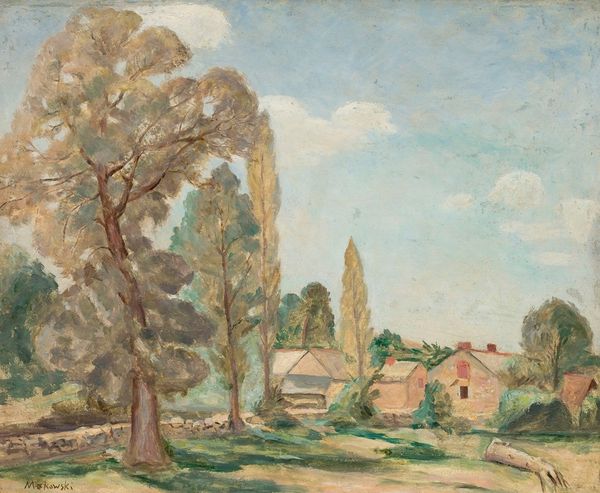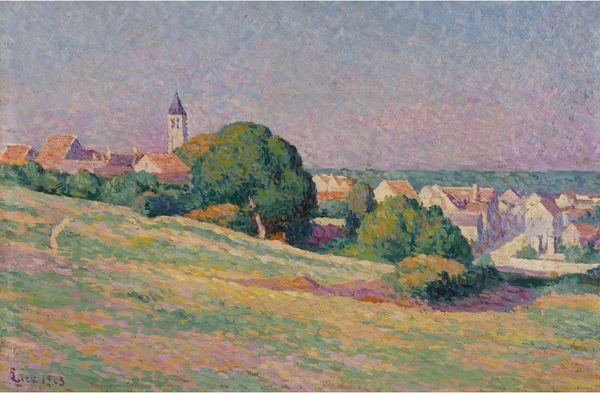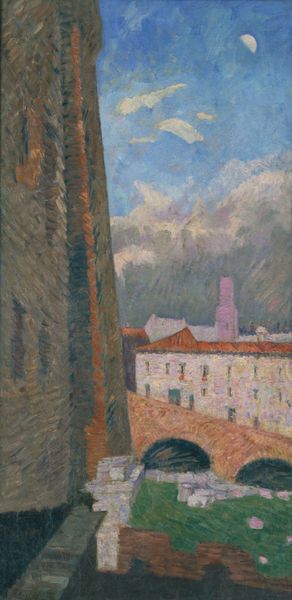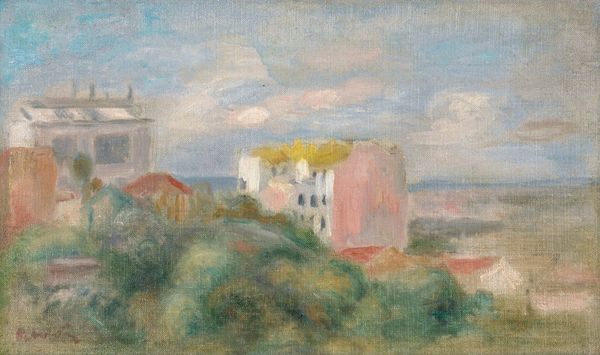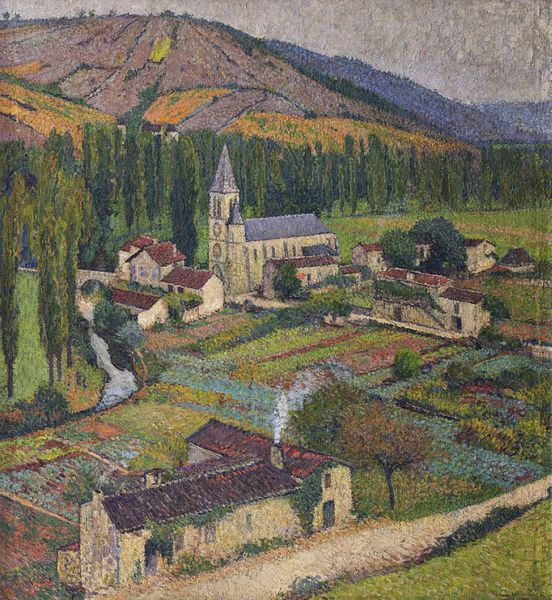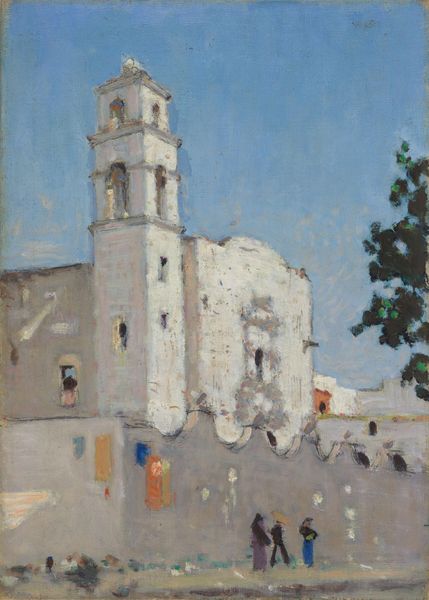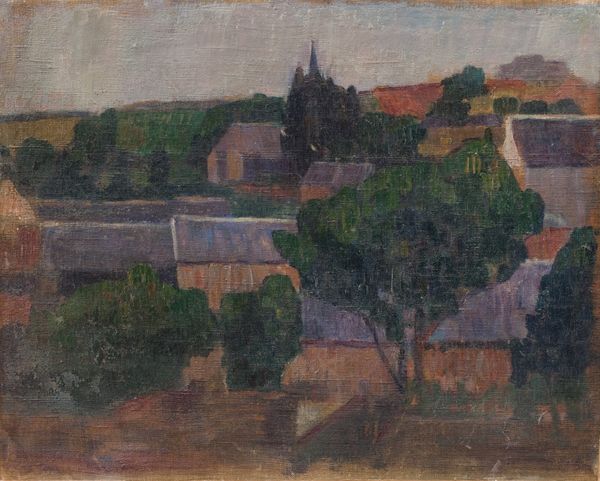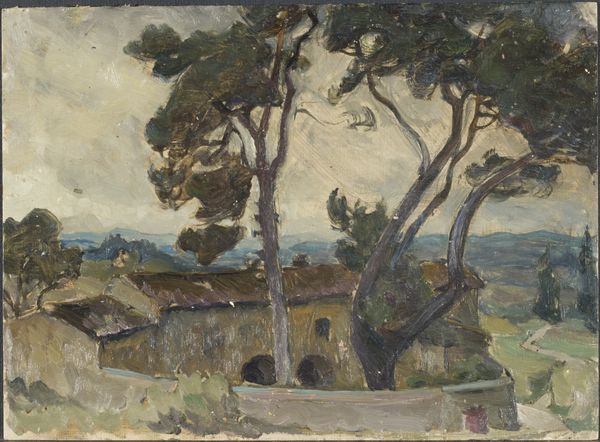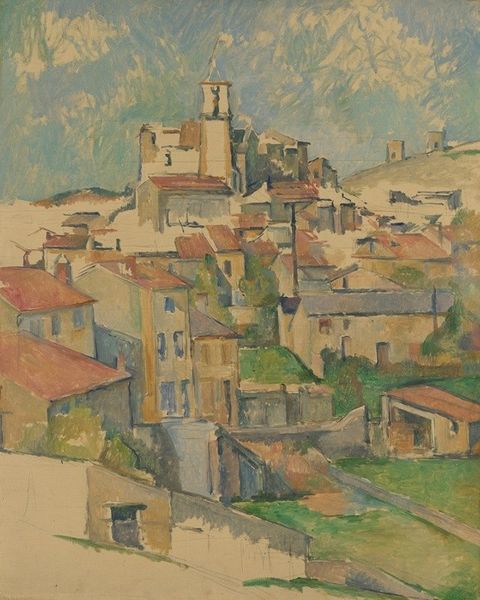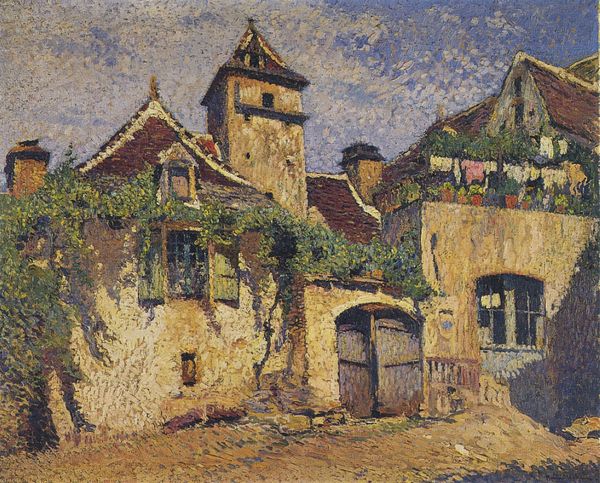
Copyright: Public domain
Curator: This oil painting is titled "The Church of Ayia Aikaterini, Thessaloniki," created in 1917 by Konstantinos Maleas. Editor: Immediately I'm struck by this kind of hazy stillness. It’s almost dreamlike. The tower on the left shoots up so high, and the palette feels really restrained, almost like a faded memory. What about you? Curator: The faded palette, in my view, speaks directly to the cultural and political milieu of the time. Maleas painted this during World War I. Thessaloniki was a city undergoing dramatic changes. The inclusion of the Byzantine church speaks to notions of continuity and resilience in the face of adversity. Editor: That's interesting. It makes me consider the juxtaposition of that very sturdy, seemingly permanent architecture with, like, the ephemerality of those light washes of color. Almost a sense of hope being built atop impermanence. It's romantic, if a little melancholy. Curator: It is definitely evocative, especially as it reflects broader intersectional historical forces at play. The use of the Byzantine style connects to national identity and perhaps even resistance against Ottoman influences, a point worth underlining when discussing art from this region. Editor: Ah, of course. Seeing it from that perspective gives so much more weight to that singular figure walking past in the bottom left corner too, in their monastic robes. A lone figure under watchful architecture, steeped in history. It almost tells a story of the resilience of belief in an ever-changing landscape. It all echoes somehow. Curator: Indeed, and in Maleas' choice to blend Impressionistic techniques with Byzantine subject matter, he participates in a dialogue about tradition versus modernity, which mirrors larger socio-political debates occurring at the time within Greece. Editor: You know, hearing all of that makes me rethink my first impressions, and it certainly does layer it with meaning, a depth I probably would have completely missed otherwise. It becomes more than just a pretty painting then. Curator: Precisely! By investigating the social, cultural, and political conditions in which art is created, we achieve a richer, more complex understanding. The seemingly simple cityscape turns out to have plenty to tell us. Editor: Absolutely, it is fascinating how looking a little deeper and scratching beneath the surface, we found stories hidden there, waiting for us to ask the right questions. Thanks for peeling back some of the layers for me!
Comments
No comments
Be the first to comment and join the conversation on the ultimate creative platform.

